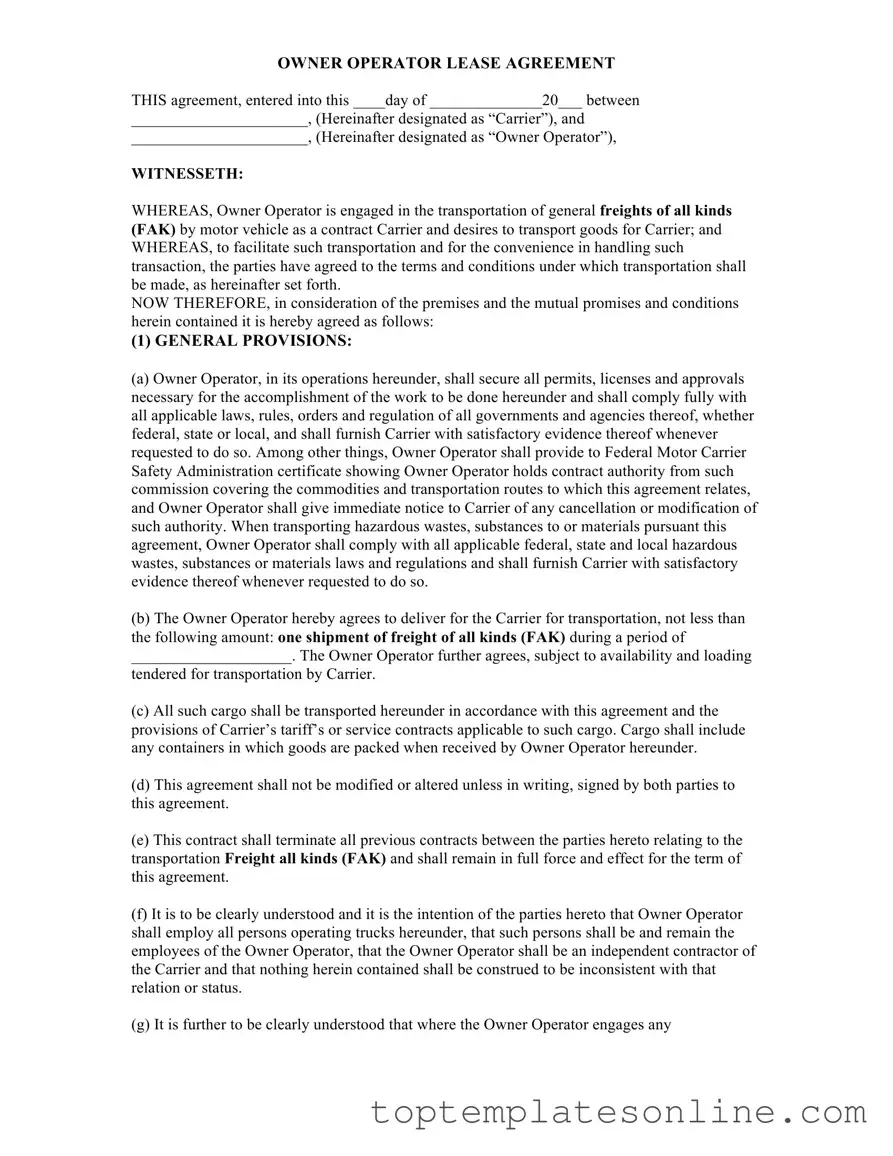The Owner Operator Lease Agreement form serves as a crucial document in the transportation industry, establishing a formal relationship between a carrier and an owner operator. This agreement outlines the responsibilities and obligations of both parties involved in the transportation of goods. Key elements include the general provisions that require the owner operator to secure necessary permits and comply with applicable laws, ensuring that all operations are conducted legally and safely. The agreement specifies the quantity of freight to be transported and emphasizes that the owner operator acts as an independent contractor, responsible for their employees and any subcontractors they may engage. Additionally, the form addresses liability issues, mandating that the owner operator indemnifies the carrier against potential claims arising from their operations. Insurance requirements are also highlighted, with stipulations for coverage that meet federal and state regulations. The terms of compensation, confidentiality, and the governing law are clearly defined, ensuring that both parties understand their rights and obligations. By establishing these terms, the Owner Operator Lease Agreement form facilitates a structured and legally sound framework for the transportation of goods, promoting clarity and accountability in the business relationship.
